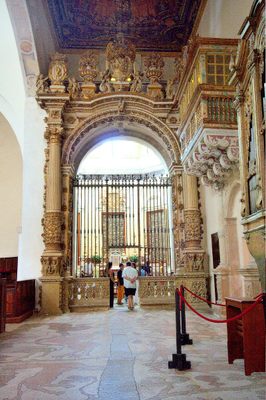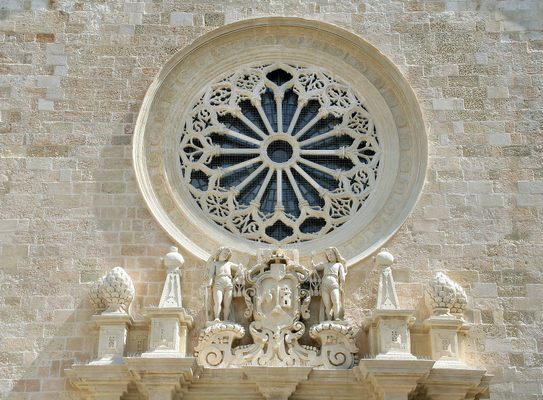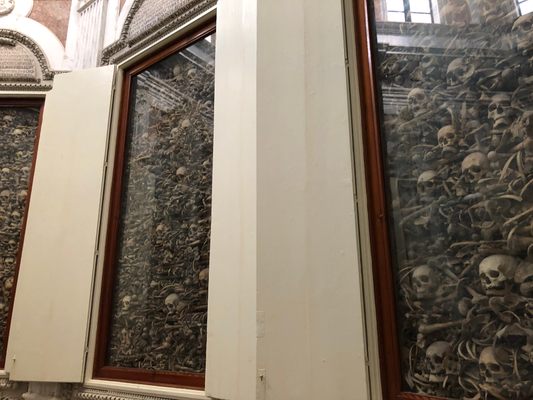About
In the heat of summer, 813 Christians huddled in the crypt of their local cathedral. They took the eucharist and waited to be sawn in half by the Turks attacking their village. What's left of them is now behind the altar.
In July of 1480, 128 Ottoman ships landed on the shores of Otranto as the first plan of attack in taking over Italy. It was a bloody attack. The Otrantians put up a fight but they were no match for the the Ottomans, who went from house to house, looting, murdering, and setting afire everything in their path.
After 15 days of siege, the Ottomans had destroyed nearly everyone and everything. When they reached the Otranto Cathedral, they found a small band of Christian survivors huddled in the nave, led by the Archbishop Pendinelli in full regalia. They were given the option to convert to Islam on the spot, but they refused. The Archbishop was beheaded on the altar and accompanying clergymen were sawn in half.
The rest of the Christians were taken prisoner–the women and able children were sold into slavery while babies and adult men were killed. They stood firmly by their faith, but one man in particular, the tailor Antonio Primaldo, stood out in his conviction. As such, the Ottomans beheaded him first. However, as Paul Koudounaris writes in The Empire of Death, "...his body rose and stood upright. The Turks could not bring it down, even with the aid of an ox: it stood until the last of the victims fell." This miraculous feat prompted one executioner to fall to his knees and convert on the spot, though he was immediately impaled.
It took the three kings of Naples, Aragon, and Sicily to recapture southern Italy, but they were eventually able to force the Ottomans out. The cathedral had been badly damaged, used for a brief time as a mosque and then as a stable. The rose window and some of the 12th century frescoes were restored, along with the marvelous mosaic on the floor of the nave. The martyrs' skulls were collected and placed in the cathedral's reliquary, where they remain today.
In 1711 a chapel was built off the main cathedral, specifically dedicated to the martyrs. Some of their bones are viewable in glass cases behind the altar while others reside in display coffins. The "stone of martyrdom," upon which the Christians are believed to have been beheaded, lies behind the altar as well. In 2013, the 813 martyrs who hid in the church were collectively granted sainthood by Pope Benedict XVI.
Related Tags
Flavors of Italy: Roman Carbonara, Florentine Steak & Venetian Cocktails
Savor local cuisine across Rome, Florence & Venice.
Book NowCommunity Contributors
Added By
Published
September 29, 2016












































